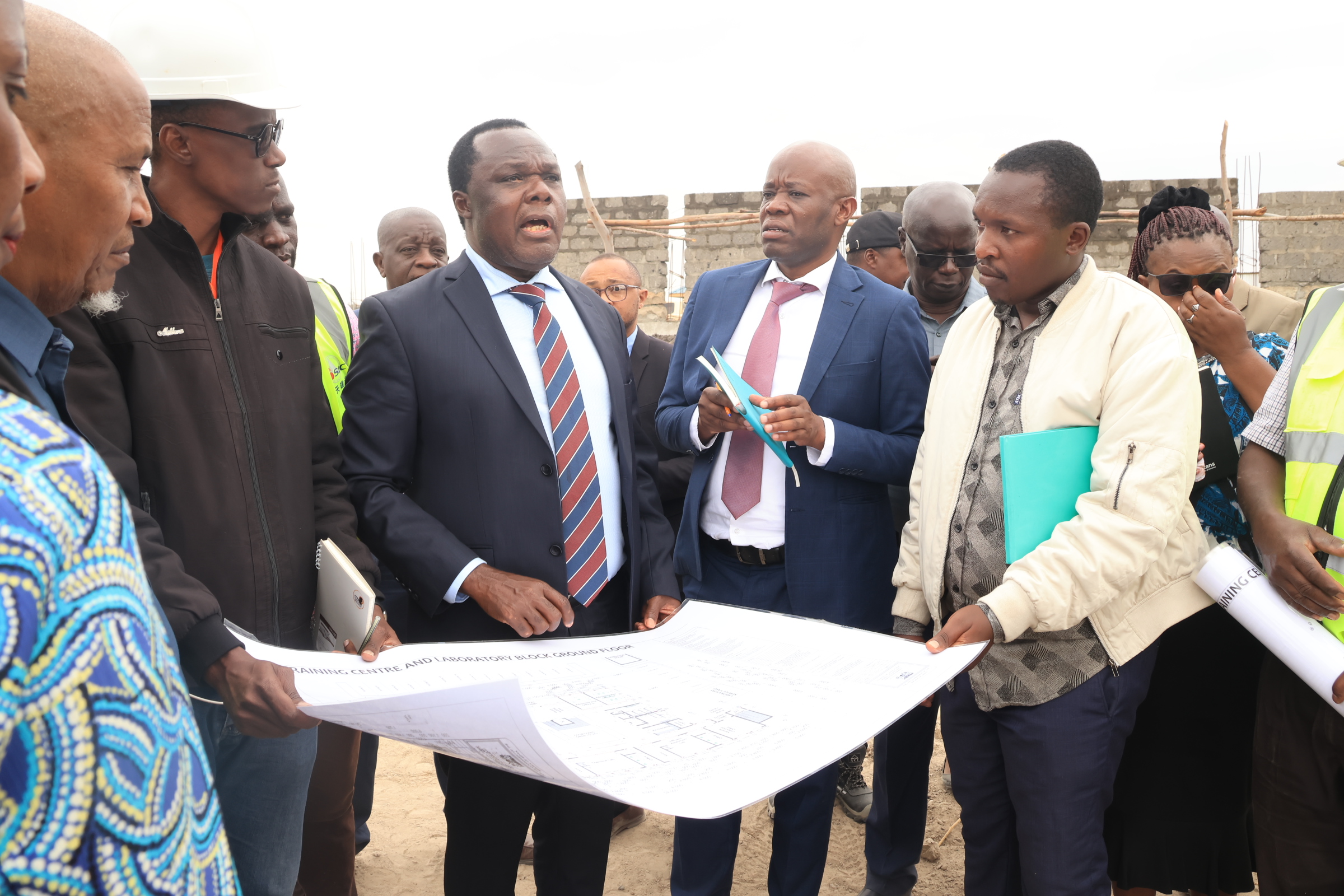

The Kenya Leather Industrial Park, located at Kenanie, Machakos county, will be ready for operationalisation by December, marking a significant milestone in the country’s industrial transformation.
Industry PS Juma Mukhwana confirmed its readiness to start operations by the end of the year during a tour of the facility on Wednesday.
The park, developed jointly by the Kenya Leather Development Council and the Export Processing Zones Authority, is 70 per cent complete.
The park’s development aligns with the government’s Bottom-Up Economic Transformation Agenda, which identifies the leather industry as a priority area for job creation and value addition.
“This is a major step in actualising the Beta agenda. The park will not only reduce the country’s dependency on imported leather products, like shoes, but also enable Kenya to tap into the estimated Sh175 billion market potential in the leather value chain. The park will help reduce imports of leather products, as they will now be produced locally,” he said.
The PS encouraged investors to take up rental spaces in the park, noting the availability of warehouses ready to serve as tanneries and manufacturing facilities for finished leather products, complete with utilities such as water, electricity and internet. Ongoing infrastructure works, including roads and security, are also in progress.
"We are offering competitive and fair pricing for rental spaces and there are multiple advantages of operating within an Export Processing Zone as investors will enjoy tax holidays and duty remission on imported machinery for manufacturing," he said.
These facilities, supported by essential infrastructure, position the park as a ready-to-go industrial hub for leather processing and manufacturing. This is expected to boost local manufacturing, cut import costs and create over 100,000 jobs, up from the current 17,000, once fully operational.
Mukhwana, who also toured the Training and Production Centre for the Shoe Industry in Thika, urged KLDC to collaborate with institutions like the Kenya Industrial Training Institute to expand technical training in leather processing. He noted that the government was committed to supporting skills development through partnerships, equipment supply and teacher deployment.
KLDC chief executive Issack Noor, who accompanied the PS during the inspection, said the facility features a finalised common effluent treatment plant. He highlighted that Kenya produces approximately three million hides from large livestock and over 18 million skins from goats and sheep annually, a large portion of which is underutilised or exported unprocessed.
“The leather industry has the potential to grow from generating Sh15 billion to Sh120 billion annually. With the establishment of this park, we aim to harness that value locally and even surpass Sh175 billion through full value-chain development,” Noor said.
He emphasised the need to relocate tanneries into the park and invest in cleaner, efficient leather processing.
The park’s design incorporates sustainability measures to ensure environmentally friendly processing.
"Leather processing is traditionally considered polluting, but with modern technologies in waste treatment and water recycling, we aim to make Kenanie a model of green industrialisation," he said.
Noor also emphasised the importance of creating backward and forward linkages within the sector, from livestock farmers and abattoirs to logistics providers and exporters, so as to build a complete and efficient ecosystem for leather.
"The main product that contributes to leather is meat and leather can earn five times more value than meat if processed and marketed properly. We are wasting billions every year. That must end now,” he remarked.
As demand for quality leather products continues to grow both locally and internationally, the Kenanie park is expected to serve as a catalyst for Kenya’s rise as a leather processing and manufacturing powerhouse in Africa.










